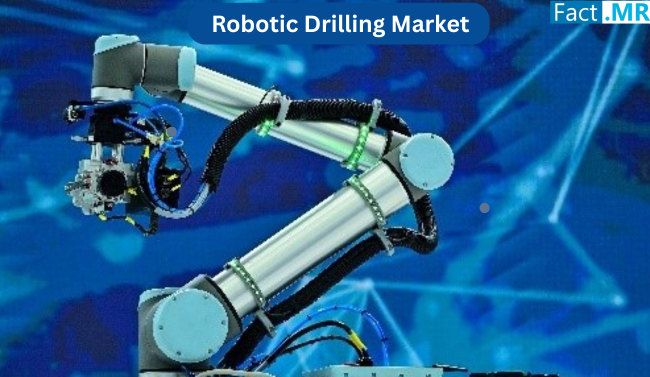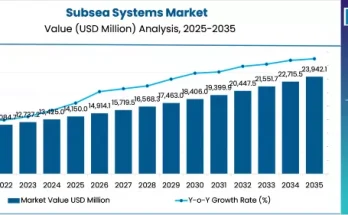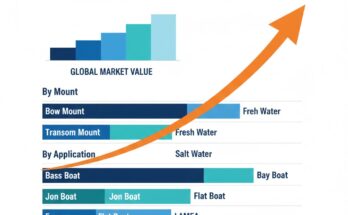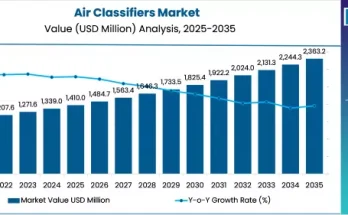The robotic drilling market is experiencing a revolutionary era, spurred by rising demand for automation in the energy industry. As companies aim to boost efficiency, safety, and accuracy in drilling operations, robotic drilling systems are being positioned as a key solution. Robotic drilling systems combine superior hardware and software to automate drilling, minimizing human involvement and related risks.
Robotic Drilling Market Overview
Robotic drilling systems are made to mechanize the process of drilling, providing advantages such as precision, lower operational costs, and increased safety. The systems are especially helpful in harsh environments where conventional drilling is very risky. The market involves diverse components such as robotic arms, control mechanisms, sensors, and software platforms that coordinate to perform accurate drilling operations.
Robotic Drilling Market Key Drivers
- Safety and Risk Reduction: Robotic drilling reduces exposure of humans to risky environments, hence minimizing chances of accidents and enhancing safety levels in drilling operations.
- Operational Efficiency: Automation results in quicker drilling rates, uniform performance, and less downtime, making it more productive.
- Reduced Costs: Through elimination of redundant steps and minimization of errors, robotic drilling systems assist in reducing operational costs in the long term.
- Data Accuracy: High-performance sensors and control systems allow accurate data gathering, which improves decision-making and optimizes processes.
Robotic Drilling Market Segmentation
By Rig Type:
- Onshore: Robotic systems are being increasingly applied in onshore drilling operations as they are economical and easy to implement.
- Offshore: Offshore drilling enjoys robotic systems capable of operating in deep water conditions, which boosts safety and efficiency.
By Technology:
- Hardware: Robotic arms, drilling machines, and control units that are necessary for physical drilling operations.
- Software: Software platforms oversee the functioning of hardware elements, data processing, and analytics for improvement.
By Application:
- Oil & Gas Well Drilling: Robotic systems are widely applied to drill oil and gas wells with precision and efficiency.
- Mining: Robotic drilling supports exploration and production, especially in dangerous or inaccessible locations.
- Workover Operations: Robot systems are used to maintain and upgrade existing wells, supporting longer operational life.
Regional Insights
- North America: The region is a leader in embracing robotic drilling technologies due to innovations in shale gas exploration and emphasis on safety and efficiency.
- Europe: Regulatory safety standards and the trend of automation in the energy industry are driving the market in Europe.
- Asia-Pacific: industrial robot at a fast pace and energy needs are resulting in higher robotic drilling system adoption rates in China and India.
- Middle East & Africa: With the abundance of oil and gas resources, the region is investing in robotic drilling for improving extraction methods and safety procedures.
Robotic Drilling Market Challenges and Opportunities
Challenges
- High Upfront Costs: The expense of installing robotic drilling systems may be high, which acts as a hurdle for certain organizations.
- Technical Sophistication: Installation of sophisticated robotic systems demands technical expertise and training.
Opportunities:
- Technological Innovation: Continuous technological advancement is making robotic drilling solutions more affordable and easier to use.
- Growing Applications: Applications for robotic drilling extend beyond oil and gas and are now being used in geothermal energy and construction industries.
Technological Innovation Influencing the Robotic Drilling Market
The robotic drilling industry is being defined by ongoing developments in automation, artificial intelligence (AI), and real-time analytics. All these advances are making it possible for drilling systems to make fewer human errors and execute operations with more precision, leading to safer and more cost-effective operations. Sensor-installed drill strings, automated pipe handling systems, and machine learning-based predictive maintenance systems are helping to redefine what robotic drilling systems are capable of doing.
Among the major technology transitions is the increasing use of fully automated drilling rigs that embed hardware and software capabilities. The systems can automatically perform activities such as tripping, directional drilling, and pressure control, minimizing downtime and risk of operations. Additionally, remote monitoring and digital twins are improving operational transparency and enabling proactive decision-making, especially in offshore and difficult-access environments.
Competitive Landscape and Strategic Developments
The market for robotic drilling is moderately consolidated, with a number of prominent players constantly investing in research and development to enhance their competitive position. Firms are making strategic collaborations and joint ventures to jointly develop sophisticated automation solutions as well as increase geographical reach.
Several participants in the market are also embracing asset-light business models by providing robotic drilling solutions on a service basis. This reduces the amount of capital expenditure for customers while enabling providers to collect recurring revenue. Concurrently, there is increasing focus on aftermarket services, including. predictive analytics and system upgrades, to provide long-term customer engagement.
The emphasis on sustainability is also encouraging players to develop energy-efficient robot systems, incorporating electric drives and artificial intelligence-based optimization tools to reduce fuel usage and emissions.
Regulatory Landscape and Safety Standards
With automation playing an ever more pivotal role in drilling activities, regulatory institutions and industry organizations are increasingly formulating standards to secure safe robotics drilling system deployment. The regulations extend to covering equipment certification, software verification, and cybersecurity measures, among others.
Conformity with such standards is crucial to achieve operator confidence and facilitate seamless integration into infrastructure. International standards for robot drilling operations are also facilitating market harmonization, lowering entry costs for new players and technologies.
The environment and human personnel safety are the top priorities, particularly in offshore operations where the risks are higher. Robotic drilling systems ensure safer working conditions by minimizing the exposure of human personnel to high-risk activities, including pipe handling and pressure control, hence leading to their adoption.
Supply Chain Dynamics and Integration Challenges
Despite the significant advantages, the robotic drilling market faces challenges related to supply chain complexity and integration with legacy systems. Incorporating advanced robotic technologies into conventional drilling setups often requires substantial upfront planning and technical support.
Vendors are required to collaborate closely with operators in order to customize solutions that meet certain project needs and infrastructure limitations. This includes extensive training modules, high-quality technical support, and continuous system enhancements. The integration of real-time data systems and analytics platforms also requires coordination among IT, engineering, and operation teams.
As digital transformation accelerates across the energy sector, companies that streamline supply chain coordination and offer plug-and-play robotic systems will be better positioned to capture market share.
Future Outlook and Strategic Implications
The future of the robotic drilling market lies in the convergence of automation, digitalization, and sustainability. With energy companies increasingly investing in smarter and greener technologies, robotic systems are expected to become an integral part of next-generation drilling platforms.
The emergence of autonomous rigs, artificial intelligence-based decision support systems, and integrated operational ecosystems will reframe drilling efficiency and cost profiles. Moreover, the increasing emphasis on data monetization—through predictive analytics and machine learning—will generate new value streams for operators and technology providers alike.
For stakeholders along the value chain, this new landscape presents challenges and opportunities. Only those companies that lead by adopting innovation, multidisciplinary collaboration, and a focus on safety and compliance will drive the transformation of the drilling industry.
Conclusion
The market for robotic drilling is expected to witness enormous growth with industries looking to improve operational efficiency, safety, and accuracy. Though the drawback of high initial investment and technical complexities are present, automation benefits to drilling operations provide rationale for adopting the same. Technology advancement in the future is likely to make robotic drilling systems more affordable and a necessary part of many industries, ushering in a new era of automated drilling solutions.



